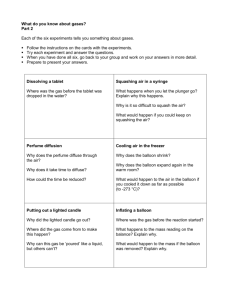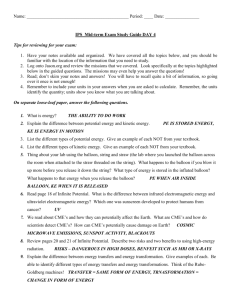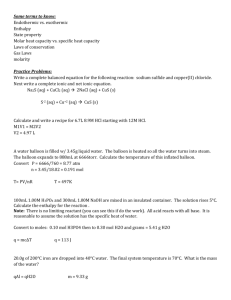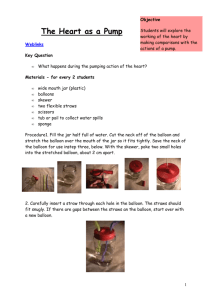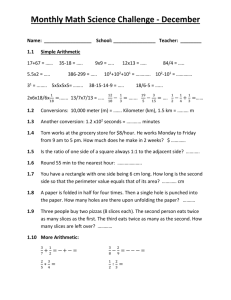Characteristics_of_Sound
advertisement
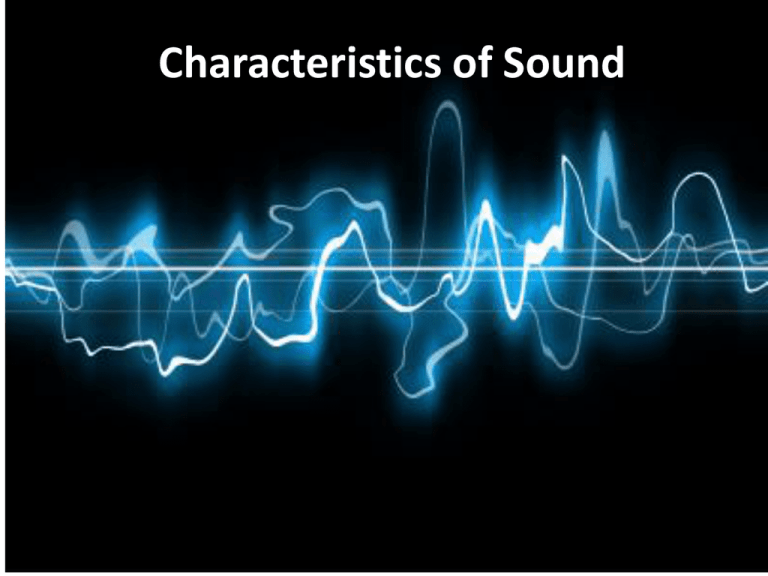
Characteristics of Sound What Produces Sound?? If a tree falls in a forest and no one is there to hear it, will there be sound? What produces sound? • Sound waves originate from a vibrating source • Sound is also known as a “pressure wave” • This is because vibrations cause changes in pressure near the source Vibrating Sources • http://www.youtube.com/watch? v=iYpDwhpILkQ • http://www.youtube.com/watch? v=3zoTKXXNQIU&feature=fvw To Do • Prove that sound is a pressure wave..... – In groups of three, light a candle and use the pressure generated by your voice to see if you can blow it out – Determine the characteristics of sound (frequency/amplitude) that are the most successful Sound travels in longitudinal waves Has areas of high pressure (compressions), normal pressure, and low pressure (rarefactions) Bell Jar Experiment • http://www.youtube.com/watch?v=ce7AMJdq 0Gw Characteristics of Sound • Bell jar experiment tells us that sound cannot travel through a vacuum. • Sound requires a medium....which type of wave is this? • Sound is capable of travelling through different types of solids, liquids, and gases. • In which medium would sound travel the fastest? To Do • Fill up one balloon with air and the other balloon with carbon dioxide (use baking soda + vinegar to produce carbon dioxide) • Investigate the differences in sound between the two mediums – Hold the balloon between your ear and some source of low-volume sound (i.e. Ticking watch). Compare the sound to the air filled balloon – Experiment with various sources of sound & record results Speed of Sound • At normal atmospheric pressure and 0 degrees C, the speed of sound is 332 m/s • If air pressure stays the same and temperature increases, speed of sound increases by 0.6 m/s per degree C. Speed of sound in air = (332 + 0.6 T)m/s ** T = temperature in degrees Celsius Practice Questions 1) What is the speed of sound at 20 degrees C? 2) What is the speed of sound at – 20 degrees C? 3) What is the speed of sound in air at 35 degrees C? 4) How much time is required for sound to travel 1.4 km through air if the temperature is 30 degrees C? Physics – Speed of Sound Answer Key 1) • • 2) • • 3) • • 4) • • • V = (332 + 0.6 (20))m/s V = 344 m/s V = (332 + 0.6 (-20)) m/s V = 320 m/s V = (332 + 0.6 (35)) m/s V = 353 m/s V = (332 + 0.6 (30))m/s V = 350 m/s 1400 m x 1second/350 m = 4s Frequency of Sound Avg. Human can respond to frequencies between 20 and 20 000 Hz. < 20 Hz are called infrasonic >20 000 Hz are called ultrasonic Dogs 15 – 50 000 Bat 1000 – 120 000 Cats 60 – 65 000 Moth 3000 – 150 000 Frequency of Commonly Heard Sounds Male speaking voice – 120 Hz Female speaking voice – 250 Hz Highest piano note – 4186.01 Hz Stereo system – 15 – 30, 000 Hz Dog – 452 – 1080 Hz Cat – 780 – 1520 Hz Bat – 10 000 to 120 000 Hz Silent dog whistle – 20 000 to 24 000 Hz Frequency vs. Wavelength





